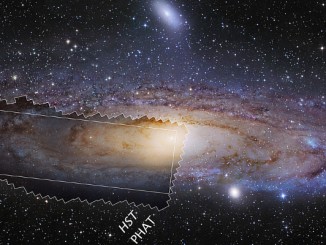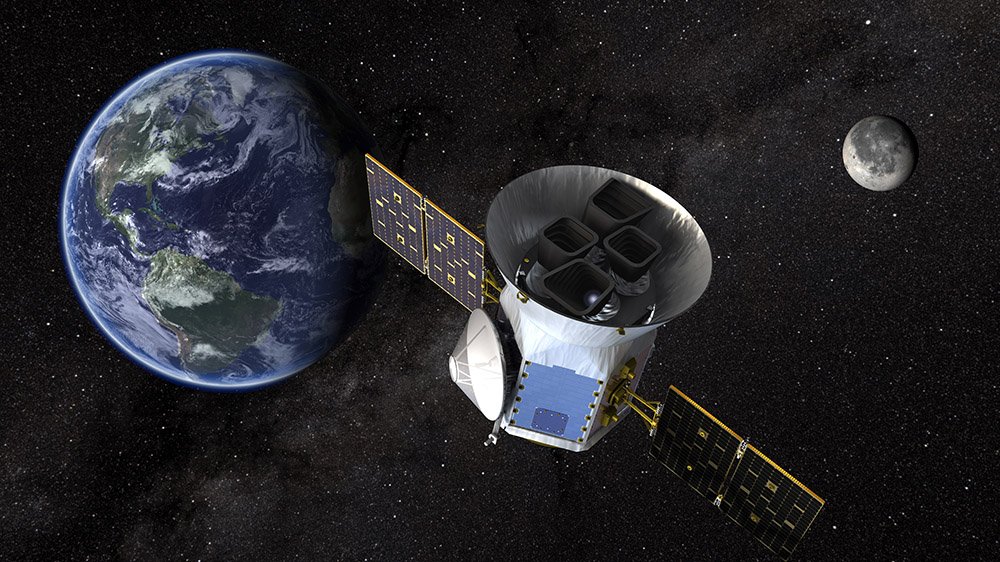
NASA’s new planet-hunting TESS observatory completed its first post-launch thruster firing Saturday, setting up for a big boost Wednesday that will send the spacecraft toward the moon for a flyby next month, the next maneuvers in a two-month process to reach the mission’s final science orbit in mid-June.
The Transiting Exoplanet Survey Satellite fired its thrusters Saturday as it reached apogee, the most distant point in its looping elliptical orbit around Earth, nearly 170,000 miles (around 272,000 kilometers) in altitude.
The rocket burn was planned as a checkout of TESS’s hydrazine-fueled propulsion system, and only nudged the satellite’s perigee, or orbital low point, slightly higher than the spacecraft’s initial perigee less than 200 miles (about 300 kilometers) above Earth.
TESS launched Wednesday atop a SpaceX Falcon 9 rocket from Cape Canaveral. The Falcon 9’s upper stage accomplished two engine firings before deploying the 798-pound (362-kilogram) observatory around 50 minutes after liftoff.
The launch placed TESS into a preliminary oval-shaped transfer orbit. The satellite will carefully maneuver into its operational perch over the next two months, with the first major step planned for early Wednesday, when TESS swings back near Earth at its first perigee since launch, according to Robert Lockwood, TESS program manager at Orbital ATK, which built and operates the spacecraft for NASA.
Five thrusters mounted at the base of the TESS spacecraft are used for major orbital adjustments, while four spinning reaction wheels inside the satellite keep it properly pointed.
The first of three planned “perigee burns” Wednesday will do most of the lifting to place TESS on a trajectory to encounter the moon May 17, passing by at a distance of roughly 5,000 miles (8,000 kilometers) and using lunar gravity to drastically reshape its orbit around Earth.
Lockwood said in an interview Thursday that the two additional perigee burns planned at the end of TESS’s second and third orbits for fine-tuning, or if the first maneuver is not accomplished as planned.
Since TESS’s launch last week, ground controllers at Orbital ATK’s headquarters in Dulles, Virginia, have completed communications system tests, computer checkouts and other procedures to ensure the spacecraft is healthy.
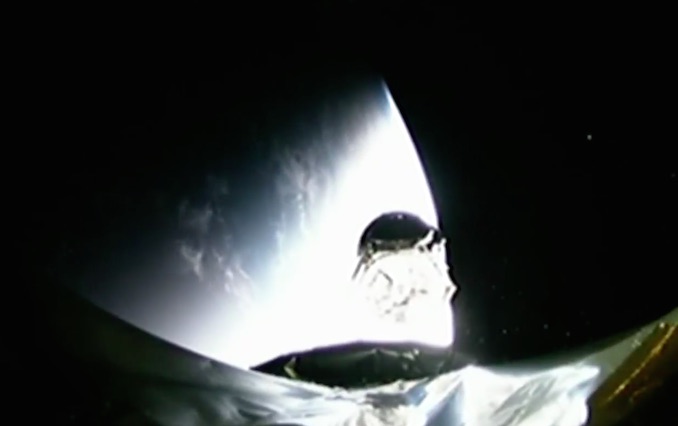
In concert with preparations for the mission’s first major engine burn, engineers in Dulles aim to switch on the data processing unit for TESS’s four imaging cameras late Wednesday, followed by activation of the cameras themselves a few hours later, Lockwood said.
TESS carries four 16.8-megapixel cameras, each fitted with four red-sensitive CCD detectors, designed to detect planets transiting in front of their host stars. The cameras will search for brief dips in starlight to find the planets, and sophisticated software algorithms will allow astronomers to scan wide swaths of the sky once full-frame images are downlinked to Earth.
During TESS’s two-year, $337 million mission, the MIT-built cameras will survey more than 85 percent of the sky, looking at approximately 200,000 pre-selected bright, nearby stars, including the 6,000 or so stars that are visible to the naked eye in the night sky.
TESS will primarily look at M-dwarf stars, which are smaller and cooler than the sun, and make up the majority of the stars in the Milky Way galaxy. Also called red dwarfs, the stars that are TESS’s focus have not been thoroughly investigated to determine whether they harbor their own solar systems.
George Ricker, who leads the TESS science team at MIT’s Kavli Institute for Astrophysics and Space Research, said the exoplanet surveyor is a “finder scope” for the planned James Webb Space Telescope and huge ground-based observatories.
“TESS is a survey machine, and it’s going to find the very best planets for us to follow-up, and among that category are these small rocky planets, transiting small red dwarf stars,” said Sara Seager, deputy science director on the TESS mission at MIT.
Ricker said he expects TESS to find between 500 and 1,000 planets that are between one and three times the size of Earth. Up to 20,000 planets the size of Neptune or Jupiter could be discovered by TESS, he said.
TESS will build on discoveries made by NASA’s Kepler observatory, which astronomers have used to find more than 2,600 exoplanets. But the worlds found by Kepler are much farther away than the ones that TESS will try to detect, and Kepler only looked at certain blocks of the sky.
The switch-on of TESS’s cameras this week will kick off steps to begin taking test images to ensure the instrument works as designed.
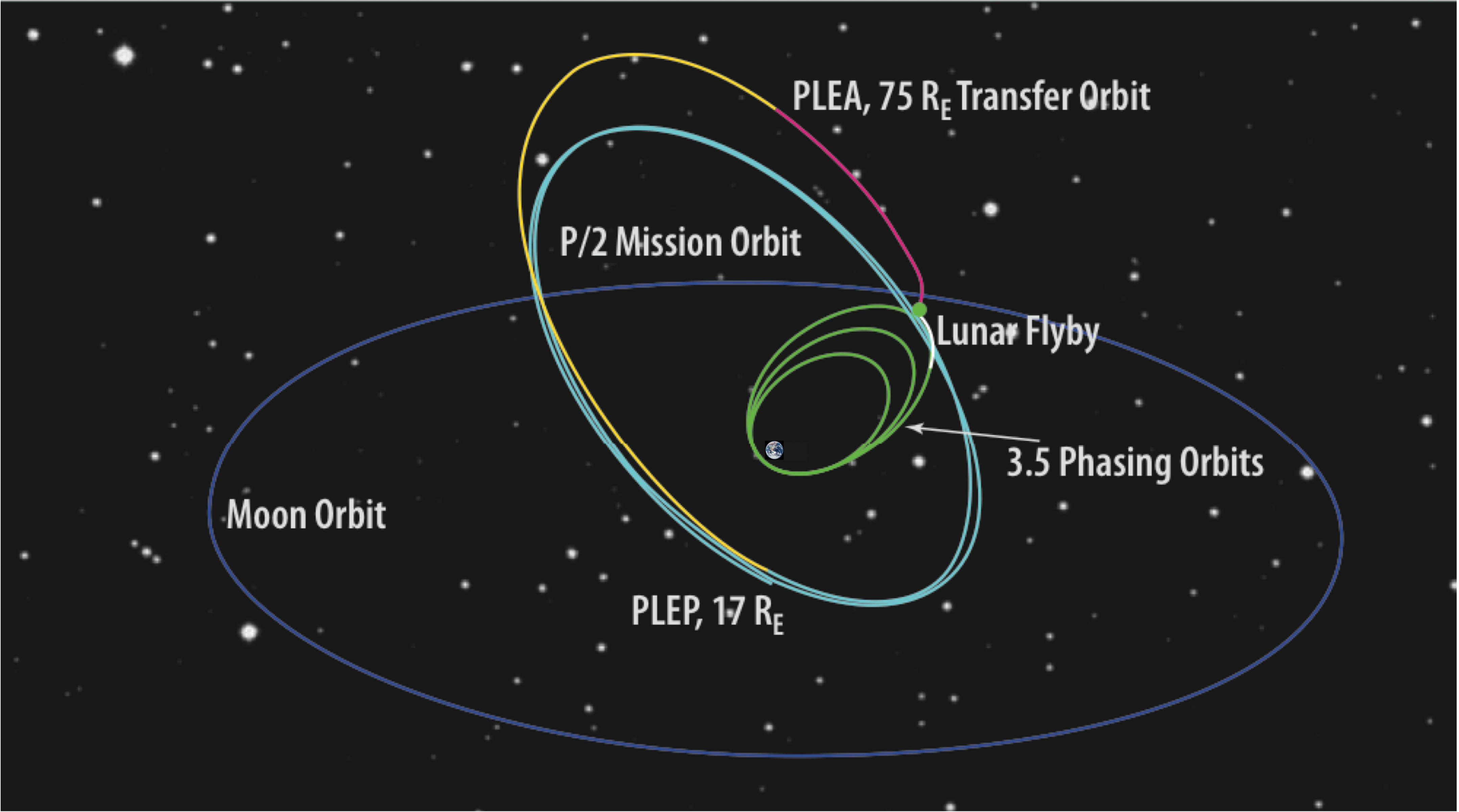
The lunar flyby next month will loop TESS into an orbit that takes it well beyond the moon, and a final major thruster firing will reduce the satellite’s apogee altitude in June.
By June 17, TESS will be in its final science orbit and ready to begin the planet hunt, Lockwood said.
TESS will end up in an orbit resonant with the moon’s, ranging between 67,000 miles (108,000 kilometers) and 233,000 miles (376,000 kilometers) from Earth. In that orbit, TESS will make one lap around Earth every 13.7 days, about half the time it takes the moon to circle the Earth.
The moon’s gravity will tug on TESS at a 90-degree angle each time the satellite passes through the moon’s orbit, pulling on the spacecraft from one direction as TESS climbs away from Earth, then the opposite direction as it descends back toward the planet.
Thanks to the moon, TESS’s “just right” orbit is gravitationally stable, requiring no maintenance burns to keep spacecraft in the correct location for scientific observations. TESS has enough fuel to keep up its exoplanet hunt for as long as 20 or 30 years, assuming NASA funding and spacecraft components remain robust, Ricker said.
“The overall effect is it actually stabilizes the orbit for TESS,” Ricker said before the launch. “This is a type of orbit that’s normally unstable. If you aren’t careful about the way that you launch into this orbit, you’re almost guaranteed to hit the moon within four years. There’s a delicate balance that’s involved in staying in this orbit, and there’s a lot of effort that’s gone into it.
“But if you actually manage to do this, this orbit is actually stable for decades. There’s no station-keeping required. You don’t have to have thrusters or anything … to maintain the orbit. So it’s a very elegant solution to this problem.”
The mission’s unique orbit also has other advantages. It stays well above Earth’s radiation belts, which pose hazards to spacecraft electronics and imaging sensors, but it comes close enough to Earth to beam imagery back to scientists through NASA’s Deep Space Network at high rates.
After more than 300 hours of continuous, uninterrupted science observations, TESS will turn and point its Ka-band high-gain antenna toward Earth at perigee, radioing full-frame images to the ground at up to 109 megabits per second, a blistering pace compared to most NASA science missions.
TESS will spend the first year of its mission surveying the southern sky, then will switch to the northern sky in 2019.
For Lockwood, who has worked on the TESS mission for eight years, last week’s launch was a turning point.
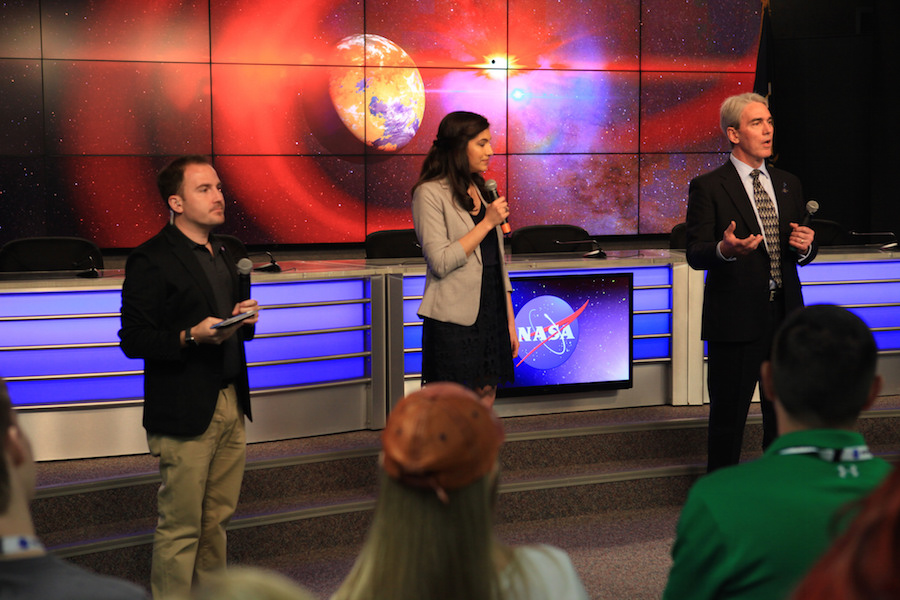
“For a while, it didn’t really feel real,” Lockwood said. “I’d been there so close to the hardware for so long, and then all of a sudden it’s not here.
“There was that brief period where I had a surreal feeling, it’s no longer around. It’s like a kid leaving to go to college, and I’ve had four kids leave to go to college.”
The launch was “terrific,” Lockwood said, timed perfectly and putting TESS on the right trajectory to begin the mission’s orbital dance with the moon.
TESS started a pre-programmed sequence after separating from the upper stage of SpaceX’s Falcon 9 rocket, and controllers received telemetry moments after the satellite’s deployment over the Indian Ocean. The satellite’s two power-generating solar array wings unfurled to start generating electricity.
“A lot of guys ran outside to go watch the rocket, but I stayed inside watching (data) on the console,” Lockwood said. “For me, it’s when it comes off the top of the rocket, and I’m waiting for telemetry to come, and I’m waiting for the solar arrays to deploy. That’s when I’m sighing a big sigh of relief.”
Email the author.
Follow Stephen Clark on Twitter: @StephenClark1.



